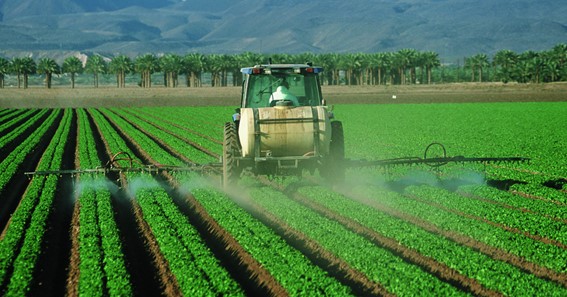Are you curious to know what is cropping intensity? You have come to the right place as I am going to tell you everything about cropping intensity in a very simple explanation. Without further discussion let’s begin to know what is cropping intensity?
What Is Cropping Intensity?
Agriculture serves as the backbone of global food production, providing sustenance and livelihood to billions of people. Within the realm of agricultural practices, cropping intensity plays a pivotal role in determining the productivity and efficiency of land utilization. Cropping intensity refers to the number of crop cycles carried out on a specific area of land in a given period. In this blog, we will delve into the concept of cropping intensity, its importance in agricultural systems, and the various factors that influence its determination.
Defining Cropping Intensity
Cropping intensity is a quantitative measure that represents the extent to which a piece of land is utilized for crop cultivation throughout a specific time frame. It is calculated by dividing the total cropped area by the net sown area and expressing it as a percentage. For example, if a region has a net sown area of 100 hectares and the total cropped area is 150 hectares, the cropping intensity would be 150%.
Importance Of Cropping Intensity
- Maximizing Land Utilization: Cropping intensity allows farmers to optimize the use of available land resources. By increasing the number of crop cycles per year, farmers can enhance productivity and generate higher agricultural outputs from the same plot of land. This is particularly significant in regions where arable land is limited, as it enables farmers to make the most of their available resources.
- Enhancing Agricultural Productivity: Higher cropping intensity is associated with increased agricultural productivity. By practicing multiple crop cycles within a year, farmers can harness the full potential of their land, maximize yield, and diversify their production. This not only ensures food security but also contributes to economic growth and rural development.
- Weed And Pest Management: Frequent crop rotations, facilitated by high cropping intensity, help manage weed and pest populations. Different crops and planting patterns disrupt the lifecycle of weeds and pests, reducing the dependence on chemical interventions and promoting sustainable agriculture practices.
Factors Influencing Cropping Intensity
- Climate And Water Availability: The availability of water and climatic conditions greatly influence cropping intensity. Regions with abundant rainfall or access to irrigation facilities can support multiple crop cycles throughout the year, thereby increasing cropping intensity.
- Soil Fertility And Nutrient Management: Soil health and fertility play a crucial role in determining cropping intensity. Well-nourished and fertile soils support higher crop productivity, making it feasible to carry out multiple cropping cycles. Adequate nutrient management practices, such as fertilization and organic matter incorporation, contribute to sustained high cropping intensity.
- Crop Selection And Rotation: The choice of crops and their rotation patterns impact cropping intensity. Some crops have shorter growth cycles, allowing for quicker turnarounds and multiple cycles within a year. Proper crop rotation strategies, including the incorporation of legumes or cover crops, help maintain soil fertility and reduce pest and disease pressures, supporting higher cropping intensity.
- Technological Advancements: The availability of modern farming techniques, machinery, and improved agricultural practices contributes to higher cropping intensity. Mechanization, precision farming, and access to quality seeds and fertilizers facilitate efficient crop management and enable farmers to achieve multiple cycles in a shorter duration.
Conclusion
Cropping intensity serves as a crucial indicator of agricultural productivity and sustainability. By maximizing land utilization, diversifying crop production, and promoting efficient resource management, high cropping intensity contributes to increased agricultural outputs and economic growth. Factors such as climate, water availability, soil fertility, crop selection, and technological advancements influence the determination of cropping intensity. Striving for optimal cropping intensity not only ensures.
FAQ
What Is Cropping Intensity Class 12?
Cropping intensity is the ratio of Net sown area to Gross cropped area.2.
What Is The Cropping Intensity In India?
India has the highest amount of cultivated land in the world, with about 51% of it being used for cultivation, 20% forests, 6% for wasteland, and 4-5% for pastures.
What Is The Formula For Crop Intensity?
Crop intensity is referred to as the number of crops grown in the same field in one agriculture year. The formula to calculate any crop intensity is: Crop intensity= Total cropped area / Total sown Area)X100.
What Is Cropping Index And Cropping Intensity?
Crop Intensity Index (CII):
Crop intensity index assesses farmers actual land use in area and time relationship for each crop or group of crops compared to the total available land area and time, including land that is temporarily available for cultivation.
I Have Covered All The Following Queries And Topics In The Above Article
What Is The Cropping Intensity Of India
What Is Intensity Of Cropping
Cropping Intensity Example
Cropping Intensity Of Maharashtra
Cropping Intensity Upsc
Cropping Intensity In Percentage
Cropping Intensity Of India 2023
Cropping Intensity Of India
Cropping Intensity Formula
Cropping Intensity Of India Upsc
What Is Cropping Intensity
What is cropping intensity examples
What is crop intensity?

